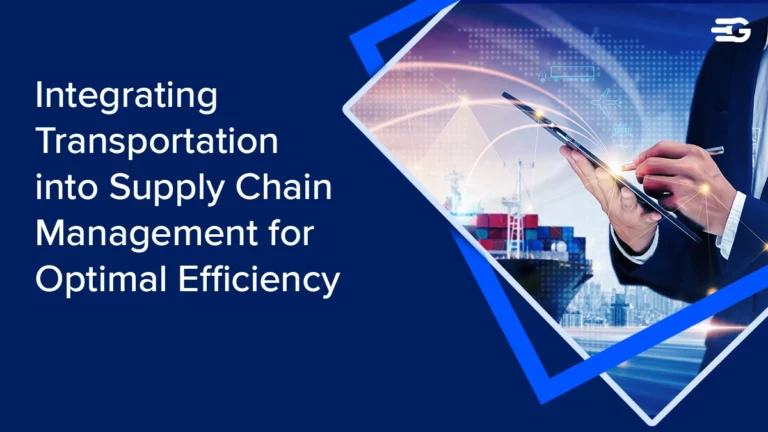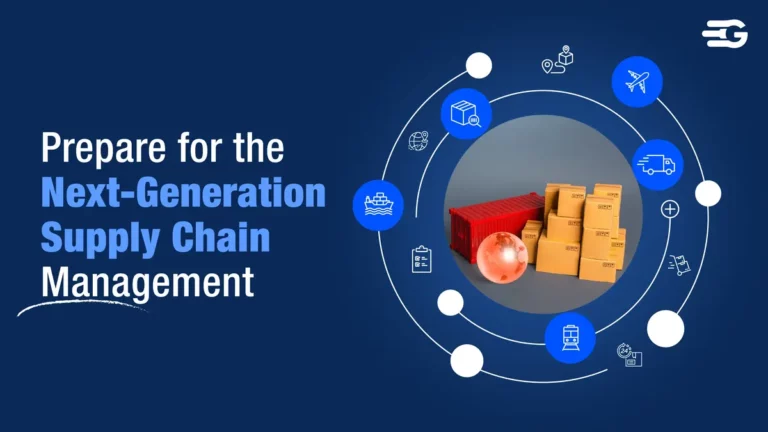Maximizing Efficiency: Mastering Supply Chain Network Optimization
Supply chain inefficiencies can drain resources and disrupt operations, leaving businesses struggling to keep up with demand. If you’re dealing with high costs, frequent delays, or poor visibility, it’s time to rethink your approach.
Supply chain network optimization is your answer to everything. From reducing costs to improving delivery times, explore proven strategies and tools that can streamline your operations and boost efficiency. Take control of your supply chain!
What Is Supply Chain Network Optimization?
Supply chain network optimization is the process of fine-tuning every aspect of the supply chain to reduce costs, increase efficiency, and improve performance. It involves everything from managing suppliers to finding the best routes for shipments. This isn’t just about cutting costs. It’s about ensuring that products get to the right place at the right time, with minimal delays. Businesses that succeed in this area are the ones that understand every piece of their supply chain puzzle and how each part affects the other.
“People assume optimization is all about finding cheaper suppliers. But it’s much more complex. It’s about balancing cost with service levels and building relationships that last.”
Importance of Supply Chain Network Optimization
Why is supply chain optimization so crucial? First, it saves money. A well-optimized network reduces unnecessary spending, such as paying for rushed shipments or storing excess inventory. When costs are minimized, businesses can invest in growth and innovation.
Secondly, optimizing the supply chain enhances customer satisfaction. When customers receive their products on time and as expected, it builds trust and loyalty. Happy customers are more likely to return, creating a steady revenue stream.
Additionally, an optimized supply chain makes a business more adaptable. In today’s fast-paced market, disruptions are inevitable. Whether it’s a supplier issue or a sudden spike in demand, an efficient supply chain allows businesses to pivot quickly, minimizing downtime and maintaining service levels.
Embracing optimization is not just a strategic move; it’s essential for thriving in an ever-changing business environment.
Signs That It’s Time to Optimize Your Supply Chain Network
Not sure if your supply chain needs optimization? Here are a few signs to look out for:
- High operating costs: If you’re constantly over budget, it’s time to evaluate your network.
- Frequent delays: Late deliveries or production delays can be a sign of inefficiency.
- Too much or too little inventory: Overstocking leads to wasted resources, while understocking leads to lost sales.
- Lack of visibility: If you don’t have a clear picture of your supply chain, you’re likely missing key issues.
If any of these signs sound familiar, it’s time to reassess and optimize your supply chain. Addressing these issues early can help streamline operations, reduce costs, and improve overall efficiency.
Strategies for Supply Chain Network Optimization
There are several strategies for optimizing a supply chain. Here are a few:
- Data analysis: Gathering data about every step of the process allows you to identify inefficiencies. Analytics tools can pinpoint where delays are occurring and what’s causing excess costs.
- Collaboration with suppliers: Strong relationships with suppliers lead to better communication and more favorable terms. Building these relationships takes time, but it’s worth it.
- Use of technology: Automation tools can streamline processes. For example, supply chain automation can help reduce manual tasks and ensure orders are processed faster.
In my experience, companies that take a data-driven approach tend to see the best results. One company I worked with saw a 15% reduction in transportation costs just by analyzing their shipping routes.
Ways to Optimize Your Supply Chain Network
Here are a few practical ways to optimize your supply chain network:
- Optimize transportation routes: Use technology to identify the fastest and most cost-effective routes.
- Automate order processing: Supply chain automation can reduce human errors and speed up the order-to-delivery process.
- Improve demand forecasting: Accurate forecasting helps reduce excess inventory and ensures you have the right products at the right time.
- Evaluate suppliers regularly: Not all suppliers maintain the same level of service. Regular evaluations can help you find new opportunities for efficiency.
When we automated the order processing system for one of my clients, we saw a reduction in processing times by 40%. This allowed them to meet customer demand faster, and it freed up time for their team to focus on higher-value tasks.
Benefits of Supply Chain Network Optimization
Optimizing your supply chain network offers a range of benefits that directly impact your business:
Reduced operational costs
By refining transportation routes, improving inventory management, and eliminating inefficiencies, companies can significantly cut costs. This includes savings on fuel, labor, storage, and shipping. Optimized networks also reduce the need for expedited shipping, which is often a major cost driver.
Improved customer satisfaction:
Timely deliveries and accurate orders are key to customer retention. An optimized supply chain ensures that products are delivered faster and more reliably. This leads to fewer delays, better communication with customers, and ultimately stronger brand loyalty.
Enhanced efficiency:
Automation and data-driven processes streamline operations, reducing manual tasks and minimizing human errors. With automation tools managing tasks like order processing and inventory tracking, businesses can fulfill more orders in less time while maintaining accuracy.
Increased flexibility
An optimized supply chain is better prepared to handle disruptions, whether it’s a supplier issue, a natural disaster, or sudden shifts in demand. By improving visibility and creating contingency plans, companies can respond quickly to these challenges, ensuring continuity in their operations.
Better decision-making
Access to real-time data and analytics helps businesses make more informed decisions. This includes optimizing inventory levels, identifying the best suppliers, and adjusting logistics strategies based on market trends or changing demand patterns.
Overall, supply chain network optimization leads to cost savings, better service, and a more agile operation. These improvements not only boost the bottom line but also strengthen a company’s ability to compete in the market.
Examples of Supply Chain Network Optimization
1. Amazon: Streamlining Warehouse Operations
Amazon, a dominant retailer, found itself confronted with logistical concerns such as inefficiency in the warehouse, high costs for keeping an inventory, and a probability of delivering bad market orders. Introducing a multi-faceted warehouse optimization project encompassing process restructuring, space redesign, and technology refreshment allowed Amazon to optimize warehouse operations and cut operational costs in half.
Through the integration of advanced warehouse management systems (WMS) and automation technologies like robots and conveyors, Amazon improved their order processing times by having a high level of inventory accuracy and good labor productivity. A corollary to this is that the organization cut down on its order fulfillment lead times by up to 30%, shed off operating costs in the warehouse by 20%, and improved customer satisfaction ratings at the same time.
2. Procter & Gamble: Improvement of Supplier Collaboration
Procter & Gamble, a manufacturer of consumer goods, experienced complications with supply chain disruptions, inventory shortages, and prolonged supply leads. To boost supplier harmony and eliminate supply chain risks, the company adopted a supplier collaboration platform and VMI program.
By providing suppliers with demand forecasts, inventory data, and production schedules, in real-time, Procter & Gamble improved the visibility and coordination of its supply chain. Consequently, the company decreased stock out by 40%, reduced the lead time by 30%, and enhanced its partnership with the primary supplier, which improved the response and reliability of the operation.
Challenges in Supply Chain Optimization
Optimizing a supply chain comes with several challenges that businesses must address to succeed:
Data accuracy
Reliable data is essential for making informed decisions. Inaccurate or incomplete data can lead to poor forecasts, inefficiencies, and costly mistakes. Ensuring accurate, real-time data across all operations is critical for effective optimization.
Resistance to change
Introducing new processes or technologies often meets resistance from employees and suppliers. People tend to prefer familiar systems, even if they are less efficient. Clear communication, training, and demonstrating the benefits of the new systems can help overcome this hurdle.
Implementation costs
Upgrading technology, investing in automation, or reworking supply chain strategies can be expensive upfront. While these investments lead to significant long-term savings and efficiency gains, the initial cost can be a barrier for some businesses.
Recognizing these challenges early allows companies to plan better, ensuring a smoother transition and higher success rates in optimizing their supply chain.
Case Studies: Essentra Revolutionized Supply Chain Management with GoComet
Challenges:
Essentra, a global manufacturer and distributor, faced multiple supply chain challenges. They relied on manual shipment tracking, which led to inefficiencies and delays. Freight selection was cumbersome, and communication gaps with vendors further complicated their operations. These issues also hindered accurate financial reporting, impacting their overall efficiency and cost control.
Solution:
To address these challenges, Essentra partnered with GoComet and implemented several of its advanced modules. With GoTrack and GoShipment, Essentra automated shipment tracking and gained real-time visibility into their supply chain. GoInvoice streamlined invoice management, reducing processing time and eliminating overpayments. Additionally, GoProcure enhanced its procurement processes by increasing vendor participation and securing better deals.
Results:
The partnership delivered significant improvements for Essentra. They achieved centralized invoice tracking, reduced turnaround times, and saw increased savings. Vendor participation improved, and data-driven decision-making became the norm, thanks to enhanced visibility across their operations. With GoComet’s technology, Essentra revolutionized its supply chain, driving efficiency and positioning the company for continued growth.
Conclusion
Supply chain network optimization is essential for any business that wants to reduce costs, improve customer satisfaction, and remain competitive. While there are challenges, the benefits of a well-optimized supply chain far outweigh the difficulties. Using strategies like data analysis, automation, and strong supplier relationships, businesses can make their supply chains more efficient and flexible for whatever the future holds.






